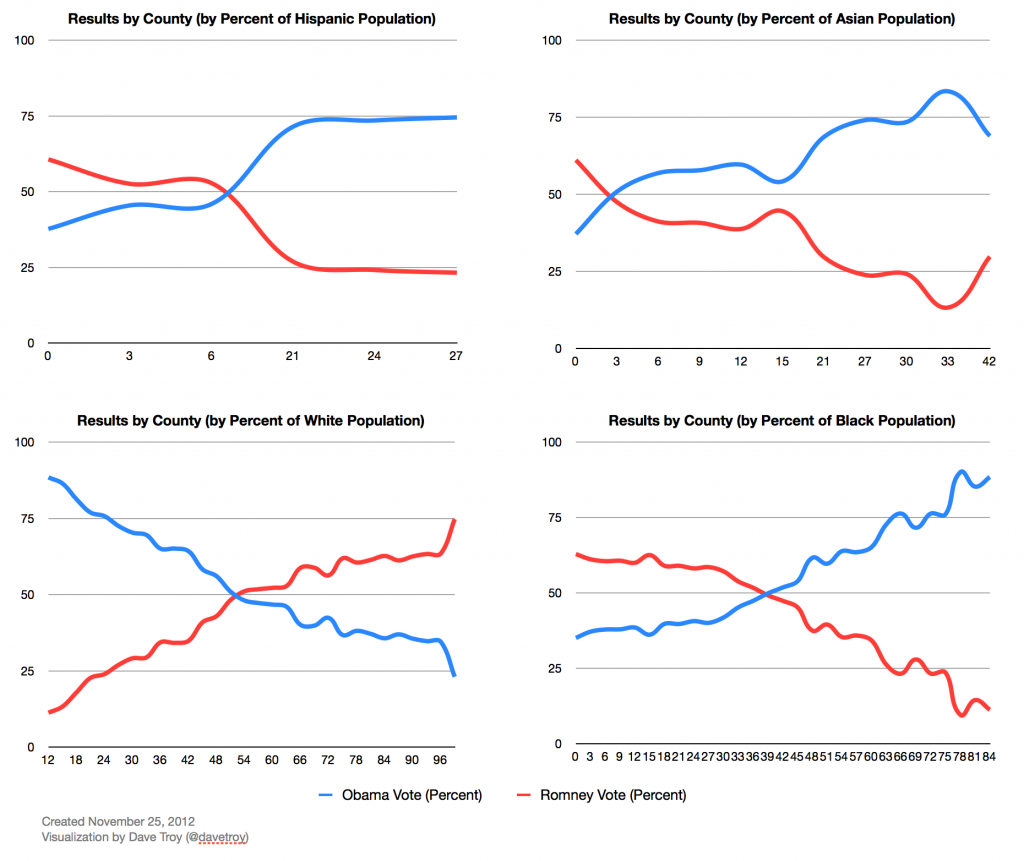I wrote recently about population density and its relationship to voting behaviors. In the 2012 election, high population density correlated with votes for Obama, while low density correlated with votes for Romney.
Others observed that red states have more traffic fatalities than blue states. This is fairly easy to explain, as red states are lower density than blue states and people necessarily spend more time in cars than in the cities of blue states.
Some suggested that race is more important and proposed some version of “white people vote for white people, black people vote for black people” as the simpler explanation. But this notion has always struck me as simplistic.
So I decided to dig in to voting behaviors by examining racial composition and the 2012 election results at the county level.
Any significant level of diversity seems to trigger liberal voting behavior. At 9% Hispanic population (or just 3% Asian population), people vote blue. Think about that for a second… if your county has just a 3% Asian population, it most likely voted Democratic.
So Do People Vote by Race?
The data show that when the percentage of black population exceeds 39%, Obama receives the bulk of the votes. This would indicate that yes, black people do often vote for black people, which by itself is not that informative. But Asians and Hispanics also apparently vote for black people as well.
Above about 55% white population, counties overwhelmingly voted for Romney. But up to 45% white population, votes went to Obama.
The real drivers seem to be density and diversity. Density (such as found in cities) corresponds with diversity. Diversity leads to progressive voting behavior.
Identity Politics
It’s simplistic to think that it’s all about identity. White voters didn’t all vote for Romney, black voters didn’t all vote for Obama, and Hispanic and Asian candidates overwhelmingly supported Obama. There is no particular reason to think that an Hispanic Republican candidate can win by running on the same old platform.
To succeed, both parties need to run candidates that will appeal to the population in America’s increasingly diverse and dense cities.

